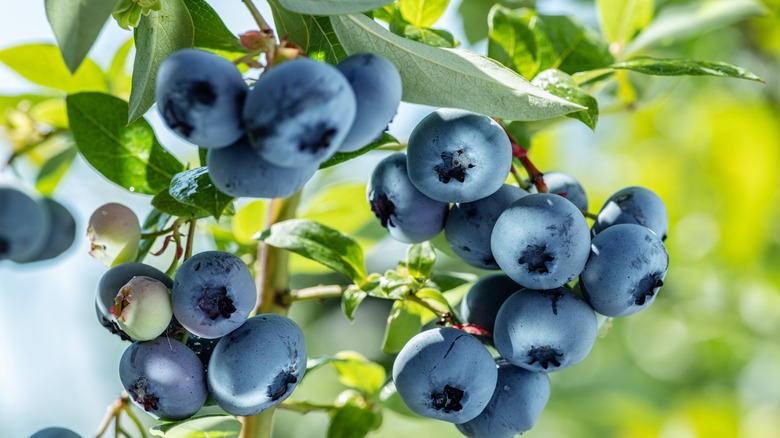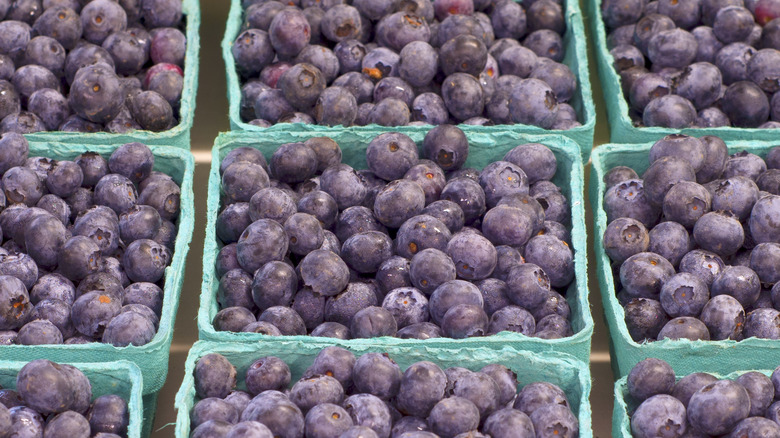Which US State Produces The Most Blueberries?
July is National Blueberry Month, and on the 8th, you can celebrate National Blueberry Day, according to the U.S. Highbush Blueberry Council. With the season for these violet morsels in full swing, you might want to consider celebrating with a blueberry-inspired cocktail or treat! But before you pop the purple-skinned berries into your mouth, let's squeeze in a quick lesson on where the blueberries you're about to enjoy come from.
Also referred to by its scientific name, vaccinium, blueberries are one of the few crops native to North America. The University of Illinois explains that they were initially foraged and used medicinally by indigenous tribes until the early 20th century when U.S. botanists found success with commercial cultivation, sparking a blueberry boom. This interest in blueberries has only grown thanks to findings that brand the berries as a superfood. Full of fiber and vitamins, Healthline notes that blueberries are also brimming with antioxidants like anthocyanins, quercetin, and myricetin, which can reduce the risk of heart disease, diabetes and cancer.
Depending on the variety and whether they're wild or cultivated, the purple-blue skins of blueberries often reveal a sweet and floral (but sometimes tart), pulpy interior. While it's typical that your berries are grown domestically, have you ever wondered which U.S. state actually produces the most blueberries?
Washington is blueberry central
About 95% of blueberries are grown in the U.S., and while several states like Georgia, Michigan and New Jersey contribute to this figure, AgHires explains that Washington produces the most berries, totaling over 160 million pounds. In fact, Washington Blueberries explains that over 18,000 acres of blueberries are planted across the state, with 55% of production in western Washington and 45% in eastern Washington.
But what makes Washington such a blueberry hub? Sequim Gazette explains the warm climate and acidic soils found across the state provide ideal conditions that allow berries to thrive. There are countless varieties, such as the Patriot, Bluecrop, Berkeley, and Darrow. Regardless of their variety, blueberries tend to favor sunny summers and mild winters typical of the pacific northwest.
When choosing the best blueberries from Washington or beyond, Bon Appétit suggests looking for plump, firm berries that have an even purple color as once berries are picked they don't tend to ripen any further. As for storage, berries can keep for about a week in the fridge, just remember to wash them only once you're ready to eat them or else you run the risk of mushy, moldy berries.

